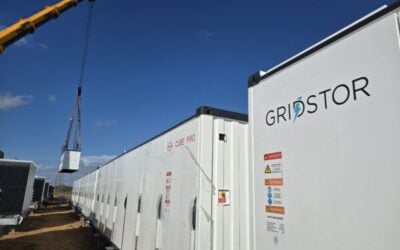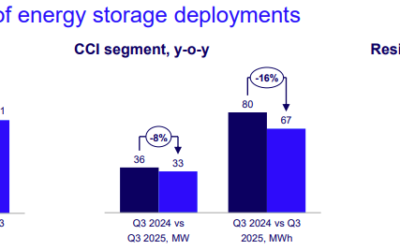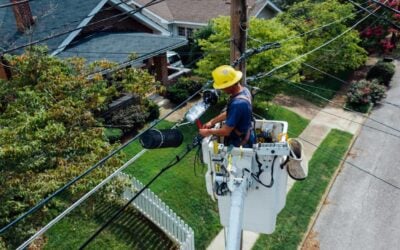A remote town in Canada which lies 55km away from the nearest electrical substation, was supplied with a battery system aimed at shoring up the reliability of its electricity supply.
Field, in the Canadian Rockies, is supplied with power by utility company BC Hydro. The town, which has just 300 inhabitants, gets its electricity through one 25kV distribution feeder. Electricity supplies are often disrupted due to weather and geographical conditions and frequently require costly and difficult repairs, as the line from the distribution feeder runs alongside an operational railway line.
The new system was supplied to BC Hydro by S&C Electric, which also designed and built it. It has now been in operation for just over six months and S&C Electric claims it has so far been a success.
Canada’s minister for energy and mines, Bill Bennett at an event to launch the system. Image: BC Hydro.
It includes a storage management system coordinating the use of a 1MW NGK Sodium-sulfur (NAS) battery. It can provide uninterrupted power for up to seven hours, which is considered long enough to keep lights on in Field while power cuts related to the distribution line are investigated and fixed.
Try Premium for just $1
- Full premium access for the first month at only $1
- Converts to an annual rate after 30 days unless cancelled
- Cancel anytime during the trial period
Premium Benefits
- Expert industry analysis and interviews
- Digital access to PV Tech Power journal
- Exclusive event discounts
Or get the full Premium subscription right away
Or continue reading this article for free
Long term, the system is aimed at reducing the area’s reliance on diesel back-up generators and generally increasing the town’s energy independence. As well as fault finding and incident response, it will also be used to reduce peak load and increase the use of clean power where possible.
The battery charges from the grid when demand is low in the town. As faults are detected and the electricity transmission lines are isolated from use, the system tells the battery to discharge as necessary.
S&C Electric claims that in six months of the system’s operation to date, six “major” events occurred, during which the battery system and its controls were able to keep power supplies to the town consistent and uninterrupted. In the period since it was brought online, the battery system has discharged around 40 hours of electricity for use by the town. By coincidence, a feeder pole broke during a ceremony to launch the S&C Electric system, which itself required the battery system to “island” the town for eight hours while the fault was fixed.
The project took two years to complete in total, costing around US$13 million, according to BC Hydro. Half of this sum went to BC Hydro from Natural Resources Canada, the ministry responsible for energy and the environment. The battery system is located in Yoho National Park, on land donated by Parks Canada.





